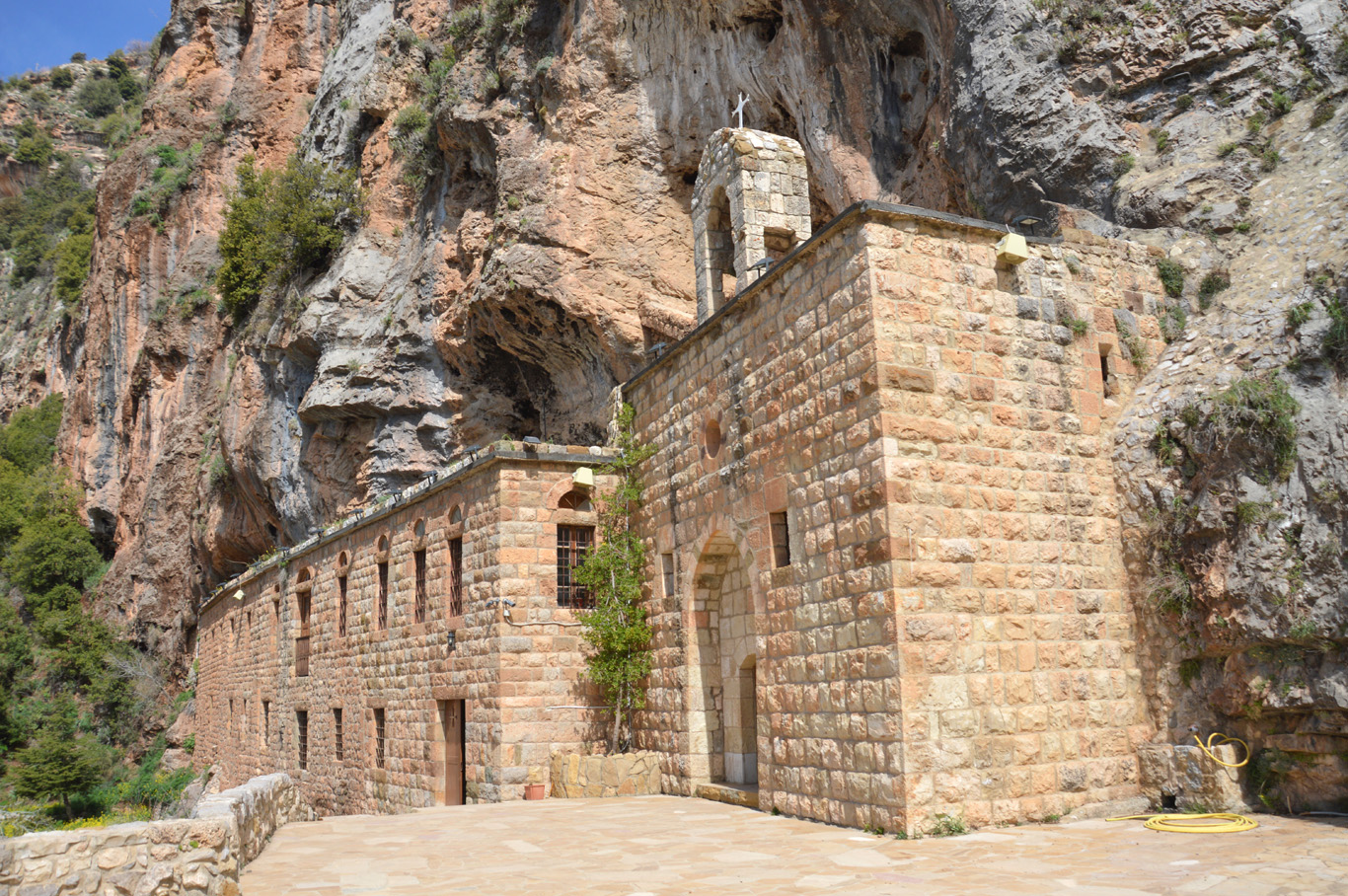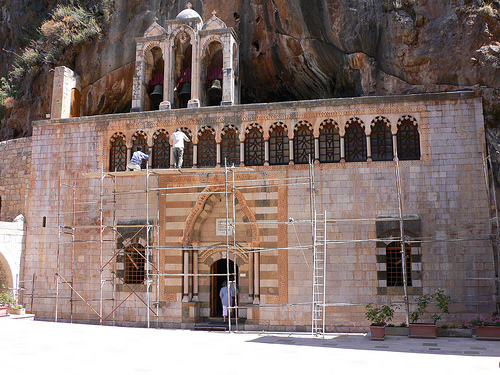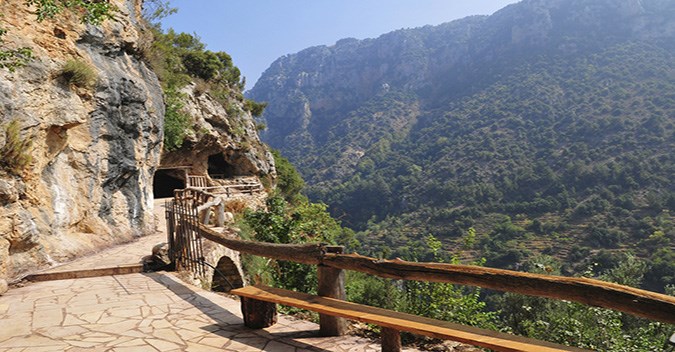Qadisha Valley: Hiking Heaven & Ancient Monasteries
Congratulations on choosing to explore the magnificent Qadisha Valley! You are in for a real treat as you embark on a journey through one of the most beautiful regions in Lebanon. With its stunning landscapes and rich cultural history, the Qadisha Valley is truly a hidden gem waiting to be discovered by you.
The beauty of Qadisha Valley
As you take your first steps into the Qadisha Valley, you will be amazed by the breathtaking views that will appear. The valley is known for its cliffs, rushing rivers, and lush greenery that contrasts the surrounding landscapes' rugged terrain. You will feel alive as you breathe in the fresh mountain air and enjoy the magnificent scenery. You can hike through the valley, photograph the stunning vistas, or sit back and enjoy the peace and tranquillity of this magnificent place.
The importance of the valley’s monasteries
The Qadisha Valley is famous for its many monasteries built into the cliffs and natural caves of the valley. These monasteries have a rich spiritual and cultural significance, serving as a testament to the region's history and providing important insights into the lives of the local people. The monasteries offer a wealth of knowledge about the spiritual practices, traditions, and artistic expressions of those who once lived and worked in the valley. You will be inspired by these monasteries' incredible architecture, artwork, and cultural heritage and feel a sense of awe and wonder at the achievements of the people who built them.
You are in for an incredible journey as you explore the Qadisha Valley. Whether you are here to experience the natural beauty or discover the region's rich cultural heritage, you will find yourself enriched and inspired by what you discover. Enjoy your adventure!

The History of Qadisha Valley
Welcome to the historic Qadisha Valley, where every step you take leads you deeper into the region's rich cultural heritage. This magnificent valley has a fascinating history, and as you explore it, you will uncover its past and appreciate its significance. Get ready for an adventure of a lifetime!
The Origins of Qadisha Valley
The Qadisha Valley has been inhabited for over 2000 years, with its earliest known residents being the Phoenicians. The valley played a significant role in the region's political and religious history and served as a refuge for people fleeing wars and persecution. It got the name “Qadisha,” which means "holy" in Aramaic, due to its numerous monasteries and churches built in the area.
How the valley has been used throughout history
Over the centuries, the Qadisha Valley has been home to different ethnic groups, travellers, and refugees. In the early 19th century, during the Ottoman Empire, the valley became a centre of Maronite Christianity and played an essential role in Maronite culture. It also became a hideout for the Maronite leaders during the 1860 civil war. During the French Mandate in Lebanon, the authorities and religious communities protected the valley's monasteries and landscape, ensuring their preservation for future generations to admire.
Today, the valley is a protected UNESCO World Heritage site celebrated for its beauty, history, and importance to the local communities. So, hop on a journey, breathe in the fresh mountain air, and let the incredible Qadisha Valley fascinate you with its rich culture and history.

Hiking in Qadisha Valley
The best hiking trails in the valley
The Qadisha Valley has numerous hiking trails perfect for adventurers of all levels. The most popular trails include:
- The Qannoubine Valley Trail takes you on a 14-kilometre journey through towering cliffs, caves, and ancient monasteries.
- The Hadchit Trail is 10 kilometres long and takes you past traditional Lebanese houses, olive groves, and beautiful waterfalls.
- The Tannourine Cedars Reserve Trail includes a 5-kilometre hike through one of Lebanon's last remaining Cedars forests.
What to bring on your hike
As you prepare for your hike, make sure to pack the following essentials to ensure a safe and enjoyable trip:
| Good hiking shoes or boots | Avoid sandals or non-hiking shoes, as the terrain can be rough and uneven. |
| Sunscreen and hat | Protect your skin from the sun's harmful rays as you hike in the open areas. |
| Sufficient water | Stay hydrated throughout your hike by bringing enough water and other beverages. |
| Snacks and food | Pack some energy-boosting snacks and light meals to keep you going during the hike. |
| Camera or smartphone | Capture the stunning views and memories to share with your loved ones. |
Exploring Qadisha Valley by foot is a unique and exhilarating way to discover the valley's hidden gems. Whether you are a seasoned hiker or a beginner, the valley has something for everyone. So, pack your bags, put on your hiking boots, and let the grandeur of the Qadisha Valley elevate your spirits.

The Monasteries of Qadisha Valley
A list of the most important monasteries in the valley
The Qadisha Valley is renowned for its ancient monasteries that have stood the test of time. Here are some of the most important ones to visit:
- The Monastery of Saint Anthony of Qozhaya dates back to the 12th century and is a UNESCO World Heritage site.
- The Monastery of Saint Maron-Anout was established in the 16th century and is one of the largest monasteries in the valley.
- The Monastery of Our Lady of Hawqa dates back to the 13th century and offers spectacular views of the valley.
What to see at each monastery
Each monastery has its unique charm and architecture, and it's a good idea to explore them all to get a complete understanding of the valley's religious history. Here are some highlights of each monastery:
| Monastery of Saint Anthony of Qozhaya | The monastery contains a chapel, rooms for monks, and various artefacts and relics from the Crusade and Ottoman periods. |
| Monastery of Saint Maron-Anout | The monastery features ancient frescoes, intricate carvings, and a magnificent bell tower. |
| Monastery of Our Lady of Hawqa | The monastery has an underground chapel, a hermitage, and a museum displaying ancient books and manuscripts. |
Visiting the monasteries of Qadisha Valley is a delightful way to experience the culture and history of the region. Whether you're a history buff or a spiritual seeker, you'll find plenty to appreciate. So, pack your bags, get your camera ready, and immerse yourself in the wonders of Qadisha Valley.

St. Anthony’s Monastery
History of St. Anthony’s Monastery
St. Anthony’s Monastery dates back to the 12th century and is a UNESCO World Heritage site. It was founded by a monk who sought refuge in the Qadisha Valley and dedicated the monastery to Saint Anthony, the patron saint of monastic life. Over the centuries, the monastery has served as a place of worship and shelter for generations of monks and hermits.
What makes this monastery unique
St. Anthony’s Monastery is one of the region's most well-preserved and striking monasteries. It features stunning frescoes and carvings, and its chapel contains various artefacts and relics from the Crusade and Ottoman periods. One of the most remarkable aspects of the monastery is its setting, nestled within the lush, green ravines of the valley. By visiting this monastery, you will enjoy a peaceful retreat away from the hustle and bustle of daily life.
Visiting St. Anthony’s Monastery is necessary for history buffs, spiritual seekers, and those seeking a day trip filled with cultural immersion. Don't forget to bring your camera and capture the beauty and serenity of this place for memories that will last a lifetime. So, pack your bags, grab your loved ones and friends, and head out to enjoy this memorable experience!

Our Lady of Qannoubine Monastery
Discover the religious and cultural heritage of Qadisha Valley's hidden gem. This day trip promises to be an immersive historical journey filled with architecture and spirituality, so prepare to make unforgettable memories with your friends and family.
History of Our Lady of Qannoubine Monastery
Our Lady of Qannoubine Monastery has a rich history that dates back to the 7th century. It served as the symbol of Maronite Christianity in Lebanon and witnessed the rise and fall of empires, including the Byzantines, the Crusades, and the Ottomans. The monastery was a refuge for the Maronite Patriarch, Joseph Douaihy, during the 17th century, and it played a crucial role in preserving Maronite heritage, culture, and language.
What makes this monastery special
The Our Lady of Qannoubine Monastery is an exceptional example of Maronite architecture with its stunning interior and exterior design. The well-maintained courtyard, bell tower, and chapel are worth exploring, and the view from the monastery's balcony is breathtaking. Visitors can witness the ritual of lighting candles and marvel at the beauty of the ancient frescoes in the chapel. The museum contains some of the most precious Maronite treasures and manuscripts, making this monastery a treasure trove of historical significance.
A visit to Our Lady of Qannoubine Monastery is a must-see for anyone interested in learning about Lebanese history and culture. Don't forget to carry your camera and capture every moment in this beautiful place. Get set to travel back in time to explore Our Lady of Qannoubine Monastery's hidden treasures and relive the glory of Maronite heritage.

Deir Mar Elisha
Congratulations, you are about to embark on a joyful journey filled with history and spirituality as you discover Deir Mar Elisha. Set in a picturesque location, this monastery promises to be an unforgettable experience for you and your loved ones.
History of Deir Mar Elisha
Deir Mar Elisha's history dates back to the 4th century when it was a refuge for religious scholars seeking solitude. This Maronite monastery also played a significant role during the Crusades, and its monks took part in the resistance against invading Mongols. The monastery's architecture reflects the Maronite style, and it underwent renovations and restorations for centuries until its present form.
What to see at the monastery
Deir Mar Elisha has many areas to explore, such as the chapel, the hermitage, the monk's living areas, and the gardens. The chapel has an awe-inspiring interior featuring ancient frescoes, and the view from the balcony offers a stunning vista of the surrounding mountains and valleys. Visitors can enjoy the tranquillity of the hermitage, which features small cells and a chapel, ideal for meditation and reflection. Additionally, the well-maintained gardens provide a peaceful and serene atmosphere.
Deir Mar Elisha is an exceptional destination for anyone keen to learn about Maronite history and culture while immersing themselves in an unforgettable spiritual experience. Don't forget to bring your camera and capture every moment of your visit to Deir Mar Elisha — an experience you will cherish forever.
Tips for Visiting Qadisha Valley
How to get to the valley
To reach Qadisha Valley, you must take a trip to Bcharre, about 140 km from Beirut. You can take a bus or a taxi to the valley. The road to the valley is steep, so make sure your vehicle is in good condition and you're an experienced driver. If you want to avoid driving, consider hiring a tour guide who knows the area well and can show you around.
What to bring with you
Pack plenty of water and snacks for your trip, as you may not find stores. Also, wear comfortable shoes and bring sunscreen and a hat to protect yourself from the sun. If you plan to camp, don't forget to bring a tent, a sleeping bag, and a flashlight. And, as always, bring your camera so you can capture every moment of your adventure in Qadisha Valley.
Visiting Qadisha Valley will undoubtedly be an unforgettable experience. Follow these tips, and you will be sure to have a stress-free and comfortable trip. Don't forget to take some extra time and explore the area to experience its beauty fully.
